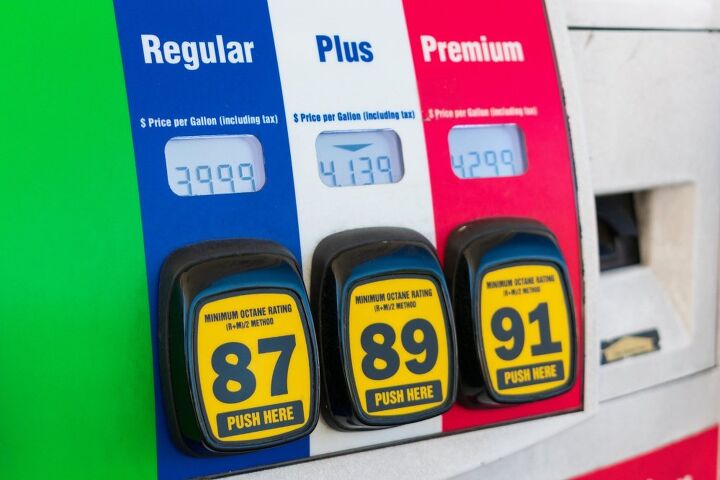Rising Fuel Prices Have Upended the Economy

Unless you’ve spent the last twelve months locked inside your home, then you’re probably dreading the next trip to the gas station. The average price for a gallon of 87 octanes has reached $3.40 in the United States. That’s about 50 percent steeper than it was at the start of 2021 and undoubtedly more than you’re wanting to shell out today. Though one cannot ignore the dizzying rates being advertised outside of British “petroleum parlors” or France’s many “un bordel pour voitures.” Canadians are also forced to endure higher gasoline prices, as the government tends to stack the taxes a little higher and the U.S. dollar tends to be more valuable. At least for now.
All you need to know for the purposes of this article is that fuel prices are up and it’s influencing the economy in some pretty dramatic ways.
Let’s start with the obvious. When gas prices are low, humans tend to scurry around their given territory more regularly. But the inverse is true when they’ve crept up to a point where drivers start second-guessing which trips they’ll be making due to a newfound aversion to filling up. That could mean fewer trips to the local grocery store, forgoing vacations, and even opting out of other purchases to make sure the fueling budget is robust enough to make it to work every day. Gallup polls have consistently shown that consumer confidence in the economy can be inversely correlated to the average price of gasoline.
This hurts retailers, who see fewer people visiting the local shopping center or logging onto their website. Higher gas prices also mean loftier shipping rates, with the difference frequently being passed onto consumers. This is particularly true of products coming in from overseas, as they’re required to traverse thousands of miles before reaching a final destination. Airline tickets will also go up in value as fueling prices tend to represent a large portion of the industry’s overhead.
Then there are the jobs. While the United States has seen an outcry for entry-level positions (e.g. food services and retail), elevated gasoline prices typically begin restricting employment the longer they persist. We’ve seen this begin to manifest among the gig economy, especially as it relates to the ride-haling/delivery services offered by Lyft and Uber.
According to the Financial Times, drivers and analysts covering the sector are reporting changes in payment algorithms to account for a 59-percent rise in the cost of fuel over the past year. Customers are being charged more and contractors are making less, encouraging them to spend fewer hours per week behind the wheel — and not just in North America.
“Drivers seem to be driving less,” Melissa Berry, editor at The Rideshare Guy, told the outlet. She said the change in driver behavior due to fuel prices “has no doubt exacerbated the driver shortage Uber and Lyft have been periodically finding themselves in.”
From FT:
Petrol prices, posted at corner stations, have been among the most visible indicators of accelerating inflation in the US. A retreat in oil markets over the past week may bring down retail petrol prices, but so far drivers have experienced little relief.
And the reason for the oil market reversal — fears that the Omicron coronavirus variant could clamp down on mobility — will hardly cheer drivers on ride-hailing apps.
To cover extra fuel costs, many gig drivers have adapted with changes including rejecting more customers who are far away. Others are quitting.
“Some drivers have been decreasing the amount of hours that they do. Some drivers have gone looking for other jobs,” said Beth Griffith, a former Uber and Lyft driver who heads the Boston Independent Drivers Guild.
An online poll conducted this week by The Rideshare Guy found that 91 per cent of rideshare drivers were worried about petrol prices, and about half of drivers were driving less. Twelve per cent said they stopped driving entirely as a result of high prices.
Uber’s solution has been to encourage drivers to swap to electric vehicles that aren’t reliant on pump gas. But EVs often come with higher price tags drivers cannot afford (even with the sizable tax credits) and are better suited to urban environments where range isn’t likely to become an issue. To remedy the first issue, Uber has opted to purchase 50,000 Tesla vehicles as part of a rental scheme. However, it’s charging employees a staggering $344 a week to use them, making it seem as though the entire plan was designed to take advantage of drivers in their moment of desperation.
With with vehicle operators paying an average of $3.40 a gallon for regular unleaded (up from $2.27 this time last year, according to data from GasBuddy), regular Americans are having to make increasingly difficult decisions of how to allocate funding as inflation (exacerbated by the fueling issue) further complicates financial matters.
Politicians don’t appear to be fairing much better.
World leaders, including Joe Biden, have been calling for the Organization of the Petroleum Exporting Countries (OPEC) to increase production. But little headway has been made since the current situation gives those nations loads of political influence, encouraging the Biden administration to join with China and a myriad of other gas-blasted nations to tap into their strategic oil reserves in a desperate attempt to ease the financial pressure. Though it must be said that this time in 2020, the United States was energy independent and wholly un-reliant on foreign oil. Perhaps with sounder energy policies, that could be true again.
As things currently stand, West Texas Intermediate crude has still gained around 45 percent this year — which happens to be great if you’re the one selling it. But local oil producers are under pressure from investors to limit output to maximize profitability. Meanwhile, environmental activism has made pursuing any energy that’s not deemed renewable taboo. This has made it more socially acceptable and financially prudent for energy concerns to raise prices, rather than increase volume.
Don’t believe us? You might want to take a gander at the stock market. Energy has been dubbed the S&P 500’s top-performing sector for 2021.
[Image: Michael Vi/Shutterstock]

A staunch consumer advocate tracking industry trends and regulation. Before joining TTAC, Matt spent a decade working for marketing and research firms based in NYC. Clients included several of the world’s largest automakers, global tire brands, and aftermarket part suppliers. Dissatisfied with the corporate world and resentful of having to wear suits everyday, he pivoted to writing about cars. Since then, that man has become an ardent supporter of the right-to-repair movement, been interviewed on the auto industry by national radio broadcasts, driven more rental cars than anyone ever should, participated in amateur rallying events, and received the requisite minimum training as sanctioned by the SCCA. Handy with a wrench, Matt grew up surrounded by Detroit auto workers and managed to get a pizza delivery job before he was legally eligible. He later found himself driving box trucks through Manhattan, guaranteeing future sympathy for actual truckers. He continues to conduct research pertaining to the automotive sector as an independent contractor and has since moved back to his native Michigan, closer to where the cars are born. A contrarian, Matt claims to prefer understeer — stating that front and all-wheel drive vehicles cater best to his driving style.
More by Matt Posky
Latest Car Reviews
Read moreLatest Product Reviews
Read moreRecent Comments
- AZFelix What could possibly go wrong with putting your life in the robotic hands of precision crafted and expertly programmed machinery?
- Orange260z I'm facing the "tire aging out" issue as well - the Conti ECS on my 911 have 2017 date codes but have lots (likely >70%) tread remaining. The tires have spent quite little time in the sun, as the car has become a garage queen and has likely had ~10K kms put on in the last 5 years. I did notice that they were getting harder last year, as the car pushes more in corners and the back end breaks loose under heavy acceleration. I'll have to do a careful inspection for cracks when I get the car out for the summer in the coming weeks.
- VoGhost Interesting comments. Back in reality, AV is already here, and the experience to date has been that AV is far safer than most drivers. But I guess your "news" didn't tell you that, for some reason.
- Doc423 Come try to take it, Pal. Environmental Whacko.
- 28-Cars-Later Mazda despite attractive styling has resale issues - 'Yota is always the answer.


































Comments
Join the conversation
Pump prices (for me in my area) that correlate with the WTI crude in my previous post are as follows: 2021 - $3.09, 2020 - $2.09, 2019 - $2.22, 2018 - $2.14, 2017 - $2.39, 2016 - $2.15, and 2015 - $1.95.
The price of any freely traded commodity like oil, stocks, bitcoin, etc. is determined by one and only one thing: Expectations about the future price. When you have an administration in the White House that has openly declared war on fossil fuels it's reasonable to expect fossil fuel prices to be higher in the future. It's really that simple.